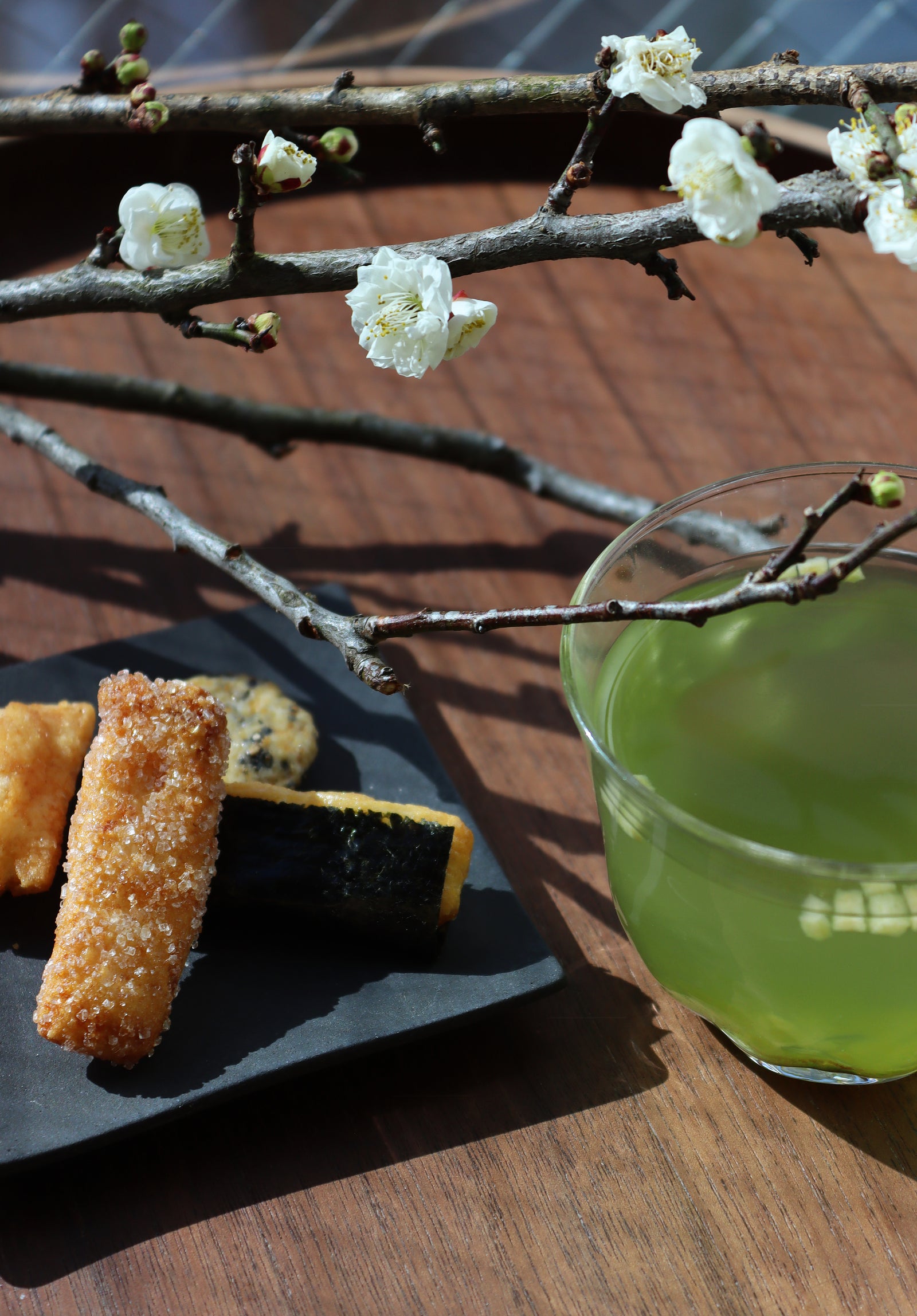The flowers of ume, the Japanese plum, bloom in February and March, announcing the beginning of spring. Around this time many people gather at parks and temples to admire the delicate and beautiful blooms. Ume blossoms have been an important motif in Japanese culture for hundreds of years for their symbolism of new beginnings and arrival of spring.

But ume’s importance in Japan goes beyond the charming flowers. One of the classics of Japanese flavours is umeboshi, a pickled fruit of the ume tree. Its sour and tangy flavour is often combined with rice. Ume fruit is also used for umeshu, a Japanese alcoholic beverage. Ume is also a popular flavour for soft drinks, candies, and seasonings for food. Especially from January to March the shelfs of stores fill up with candy and salty snacks flavoured with ume or umeboshi. Many stores also carry a variety of dried ume plums in flavours ranging from salty to sweet.
While at the start the flavour of ume, especially when pickled, can be quite intense and almost surprising, its unique tanginess and multifaceted flavour have made many people very fond of the fruit. Depending on how the ume fruit has been processed, the flavour might, for example, start as sour and savoury, then transform into sweet. The unique changing flavour and the variations available of it are one of ume’s charms.
One way in which ume is used is particularly suitable for cool winter days, ume kombucha. Kombucha is a Japanese, thin, soup-like beverage made from kombu kelp. It is well liked in Japan for its comforting flavour and warmth.
(In recent years “kombucha tea” a fermented drink drunk cold has gained a lot of popularity, and it is worth noting that it is a very different drink that does not contain any kombu kelp. In this article we are talking about the Japanese kombucha made with kombu kelp.)
One popular addition to kombucha is ume, which adds depth to the warm and savoury flavour of the kombu kelp. In most ume kombuchas the flavour of ume is not too intense, making them suitable for even people who are new to ume and might be wondering if they would like it. Kombucha is a soothing and hearty drink either by itself, or on the side of a meal.

Yunomi’s selection includes many varieties of kombucha, many of them also containing ume. The one in the picture is ume matcha kombucha, which combines the flavours of matcha, ume, and kombu. It also contains some rice cracker bits, which add nice texture to the drink. There are also many other options, like ume shiso kombucha, and a kombucha containing ume and Japanese chili spice togarashi.
The relaxing flavour and warmth of ume kombucha is perfect for this time of the year when the spring is around the corner, but days still cold. If you are looking for a new type of winter drink, ume kombucha is very worth a try!


